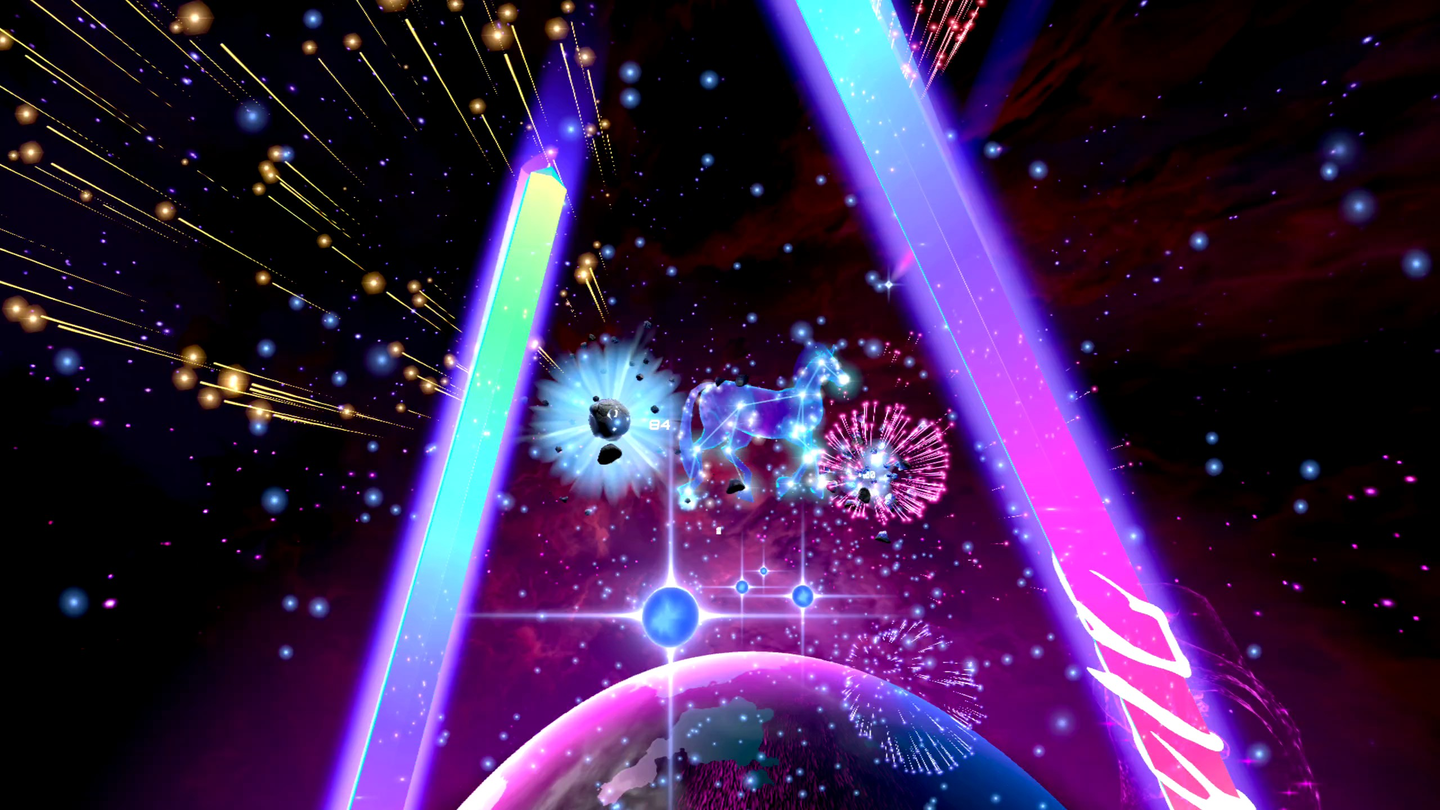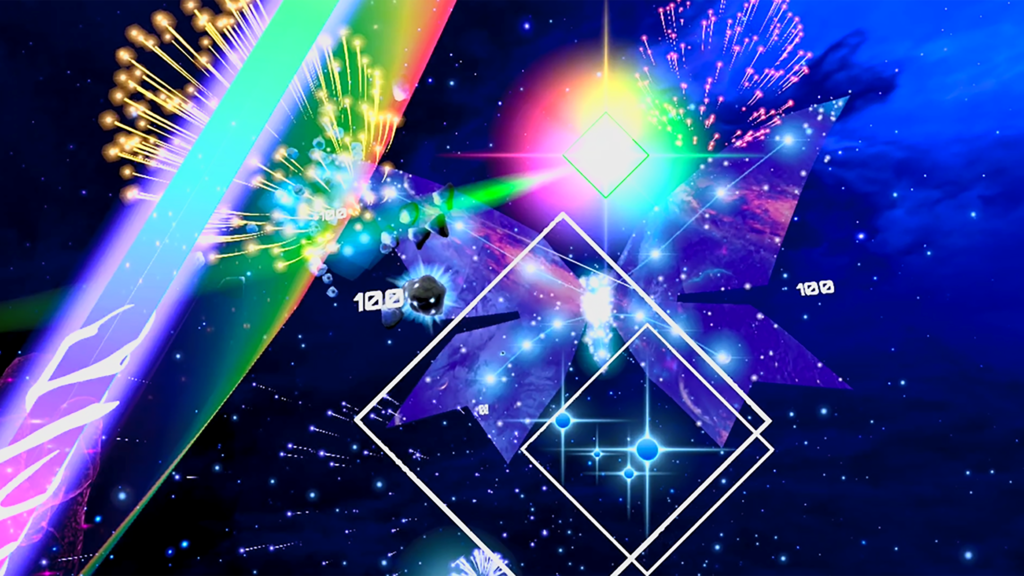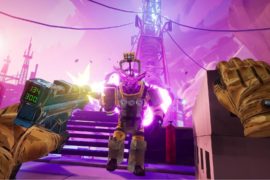VR rhythm games continue to be defined by the early and long-lasting success of Beat Saber, setting a standard many other titles in the genre would strive to attain. Meta recognized how much its reach had expanded beyond the VR community, even making it a limited time pack-in title to bring new people into the Quest ecosystem. Creating a new rhythm game that can stand out against such competition isn’t easy. Starwave might be that game.
The basic premise is similar: with interstellar wands in each hand, you swing your arms at asteroids, swirl your arms at Stardust Trails, play the drums at oncoming comets, and swing through a cosmic journey that turns the notes you hit into constellations in the sky, matching the musical tone being played. These subtle differences make a noticeable mark in building a game that not only stands apart from its big-name contemporaries like Beat Saber, and may just surpass it.
0:00
In my brief demo at Japan’s biggest indie gaming expo, BitSummit, I played three of the promised 36 areas and songs in the base game. What makes Starwave feel so unique is the freedom of expression in how you hit the notes and weave through this rhythmic odyssey. The game’s aim is simply to hit the asteroids and objects coming towards you, not slice through them at precise angles while standing at specific angles to avoid approaching walls.
It doesn’t make the game easier – you still have a rapid succession of notes and movements to hit in sequence for top scores, but this freedom brings with it much-needed musical expressionism that enhanced each of the songs I had a chance to play during my time with the game. Rather than a cold focus on hitting every note and reaching the end of a song, I could let the music flow through my body and glide across the waves, as though they’re washing over me while I conduct a celestial orchestra.
From an outside perspective, this may not have looked stylish. But as I rode the Stardust Trails, my arms would naturally rise with the music and the particles as though resting atop the ocean. For all the exertion required to get top marks at harder levels, it felt almost calming, even freeing. The presentation is clearly designed to accompany such a liberating emotion, rainbow galaxies soaring beyond my field of view in ways not too dissimilar to games like Child of Eden, a crescendo of graphics and audio that transported me from the show floor to somewhere entirely new.

Indeed, it’s easier to put this game in the camp of titles like Tetris Effect Connected or Rez Infinite in terms of their immersive nature. Even in some of the most enthralling VR titles, you remain aware of the space around you, especially if you’re playing a game that’s standing with a lot of movement and exertion. Not so here. I was lost, away in the stars, and took a moment to adjust as I returned to reality.
You can ramp up the difficulty for an added challenge, but rather than the game going from musical exercise to a fight for survival, the pure joy of Starwave’s experience remains. The full game aims to elevate you further into the stars, with a meditative Stargazer mode promising a chance to relax in space and view the constellations you built, admiring your progress. Online activities promise new challenges that build community with additional bonuses designed to tie into the cycles of the moon to truly embrace its concept.
Far from a mere also-ran, Starwave far surpassed my expectations with its demo to become one of my most anticipated Quest titles in 2024. If the game can retain the euphoria of this first impression rather than succumbing to monotony, which will rely on a strong song selection and variety, this has the chance to be something truly special.





